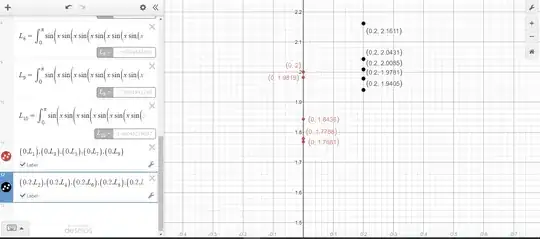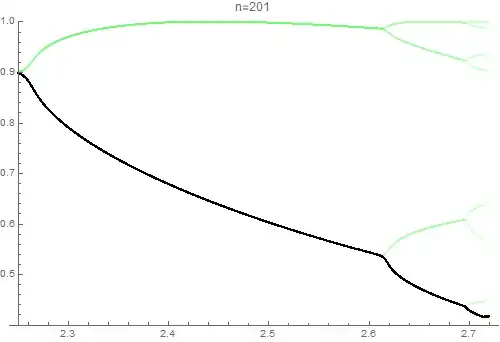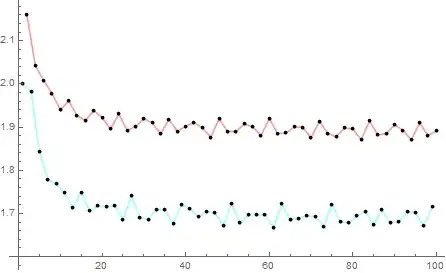This is a follow-up question to the one with addition instead of multiplication.
Consider $f_1(x)=\sin(x)$ and $f_2(x)=\sin(xf_1(x))$ such that $f_n$ satisfies the relation $$f_n(x)=\sin(xf_{n-1}(x)).$$ To what value does $$L:=\lim_{n\to\infty}\int_0^\pi f_n(x)\,dx$$ converge, where it exists?
If it does not exist, what are the values of $$L_e:=\lim_{k\to\infty}\int_0^\pi f_{2k}(x)\,dx,\quad L_o:=\lim_{k\to\infty}\int_0^\pi f_{2k-1}(x)\,dx$$ for $k=1,2,\cdots$?
The following diagram shows the values of $L_i$ for even and odd $i$. The odd $i$ all have $x$-coordinate $0.2$ and the even $i$ all have $x$-coordinate $0$.
We can see that if the limits exist, it will be extremely unlikely that they will be the same for even and odd $i$; hence why I asked the final part of the question.
I have tried to use @Tianlalu's method as in my previous question. If we define $t=\text{Sa}(x)$ as the inverse function of $y=t\sin t$ on $[0,\pi]$, then $$t\sin t=x\implies t=\text{Sa}(x)$$ If the limit exists, then $$f_\infty=\sin(xf_\infty)\implies xf_\infty\sin(xf_\infty)=xf_\infty^2\implies f_\infty=\frac{\text{Sa}(xf_\infty^2)}x$$ which is not at all useful since we cannot write $f_\infty$ purely in terms of $x$.
Any ideas on how to continue?



